Dear Zazie, Here is today’s Lovers’ Chronicle from Mac Tag dedicated to his muse. Follow us on twitter @cowboycoleridge. Rhett
The Lovers’ Chronicle
Dear Muse,
somethin’ that was sought
after for years and found,
in different ways, first
in 2018, then in 2019
and of course in 2021
“Oh this is not about your
subscription to The Paris Review”
ha, no though that is important
“Nice the way it coincides with spring”
yes, and the way it blooms, the renewal
of feelin’s and words given up for gone, till you
© copyright 2023 mac tag/cowboycoleridge all rights reserved
a thin wet sky, orange at the rim,
that meets with sun-the city skyline
a tune, homin’, seeks a shelterin’,
where dreams bloom, and feelin’s
cling, sailin’ up with the nearin’ night
a spirit, swathed in some soft veil,
takes twilight and its shadows o’er
hushed we lie, renewed together
© copyright 2022 mac tag/cowboycoleridge all rights reserved
© copyright 2021 mac tag/cowboy coleridge all rights reserved
dream a little dream…
© copyright 2020 mac tag/cowboy coleridge all rights reserved
all i ask
whatever you have
that is real…
you say you are afraid
it is too much
more and more
belief
that whatever it is
will be just right
if all that separates
is distance
if every other note
is wish you were here
then knowin’
next to you
would feel so good
© copyright 2019 mac tag/cowboy coleridge all rights reserved
if i wrote all night
would you sit with me
while i did…
well, a long damn way
come, since last year
a renewal,
for certain
on two levels,
the one of self
found,
and here to stay
the other, in you…
what else to make dreams
the weather is here
wish you were mine
© copyright 2018 mac tag/cowboy coleridge all rights reserved
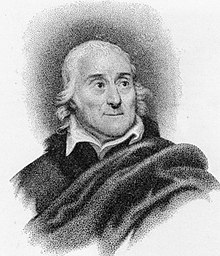
Today is the birthday of Lorenzo Da Ponte (10 March 1749 – 17 August 1838); opera librettist, poet and Roman Catholic priest. He wrote the libretti for 28 operas by 11 composers, including three of Mozart’s greatest operas, Don Giovanni, Le nozze di Figaro and Così fan tutte.
Libretti
Don Giovanni
- Notte e giorno faticar,
Per chi nulla sa gradir,
Piova e vento sopportar,
Mangiar male e mal dormir.
Voglio far il gentiluomo
E non voglio più servir.- Leporello, Act I, sc. i; translation p. 135.
- Madamina, il catalogo è questo
Delle belle che amò il padron mio;
un catalogo egli è che ho fatt’io;
Osservate, leggete con me.
In Italia seicento e quaranta;
In Almagna duecento e trentuna;
Cento in Francia, in Turchia novantuna;
Ma in Ispagna son già mille e tre.- Leporello, Act I, sc. v; translation p. 145.
- Nella bionda egli ha l’usanza
Di lodar la gentilezza,
Nella bruna la costanza,
Nella bianca la dolcezza.- Leporello, Act I, sc. v; translation p. 147.
- Delle vecchie fa conquista
Pel piacer di porle in lista;
Sua passion predominante
È la giovin principiante.
Non si picca – se sia ricca,
Se sia brutta, se sia bella;
Purché porti la gonnella,
Voi sapete quel che fa.- Leporello, Act I, sc. v; translation p. 147.
- Don Giovanni: Là ci darem la mano,
Là mi dirai di sì.
Vedi, non è lontano;
Partiam, ben mio, da qui.
Zerlina: Vorrei e non vorrei,
Mi trema un poco il cor.
Felice, è ver, sarei,
Ma può burlarmi ancor.- Act I, sc. ix, translation p. 153.
- Ah! la mia lista
Doman mattina
D’una decina
Devi aumentar!- Don Giovanni, Act I, sc. xv, translation pp. 163-5.
- Di rider finirai pria dell’aurora!
- La Statua, Act II, sc. xv, translation p. 203.
- Vivan le femmine,
Viva il buon vino!
Sostegno e gloria
d’umanità!- Don Giovanni, Act II, sc. xviii, translation p. 211.
Le nozze di Figaro
- Non so più cosa son, cosa faccio…
Or di fuoco, ora sono di ghiaccio…
Ogni donna cangiar di colore,
Ogni donna mi fa palpitar.
Solo ai nomi d’amor, di diletto
Mi si turba, mi s’altera il petto,
E a parlare mi sforza d’amore
Un desio ch’io non posso spiegar!- Cherubino, Act I, sc. v
- Così fan tutte le belle!
- All pretty women are like that.
- Basilio, Act I, sc. vii
- Così fan tutte was later used as the title of another opera by Mozart and Da Ponte.
- Non più andrai, farfallone amoroso,
Notte e giorno d’intorno girando,
Delle belle turbando il riposo,
Narcisetto, Adoncino d’amor.- Figaro, Act I, sc. viii
- Ricerco un bene fuori di me,
Non so chi ‘l tiene, non so cos’è.
Sospiro e gemo senza voler,
Palpito e tremo senza saper,
Non trovo pace notte né dì:
Ma pur mi piace languir così.- Cherubino, Act II, sc. iii
- Aprite un po’ quegli occhi
Uomini incauti e sciocchi,
Guardate queste femmine,
Guardate cosa son.
Queste chiamate Dee
Dagli ingannati sensi,
A cui tributa incensi
La debole ragion,
Son streghe che incantano
Per farci penar,
Sirene che cantano
Per farci affogar.
Civette che allettano
Per trarci le piume,
Comete che brillano
Per toglierci il lume.- Figaro, Act IV, sc. viii
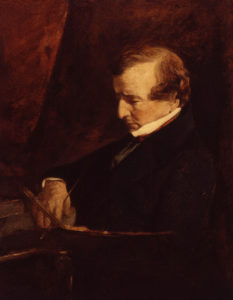 Today is the birthday of William Etty RA (York, England 10 March 1787 – 13 November 1849 York, England); artist best known for his history paintings containing nude figures. He was the first significant British painter of nudes and still lifes. Born in York, he left school at the age of 12 to become an apprentice printer in Hull. He completed his apprenticeship seven years later and moved to London, where in 1807 he joined the Royal Academy Schools. There he studied under Thomas Lawrence and trained by copying works by other artists. Etty earned respect at the Royal Academy of Arts for his ability to paint realistic flesh tones, but had little commercial or critical success in his first few years in London.
Today is the birthday of William Etty RA (York, England 10 March 1787 – 13 November 1849 York, England); artist best known for his history paintings containing nude figures. He was the first significant British painter of nudes and still lifes. Born in York, he left school at the age of 12 to become an apprentice printer in Hull. He completed his apprenticeship seven years later and moved to London, where in 1807 he joined the Royal Academy Schools. There he studied under Thomas Lawrence and trained by copying works by other artists. Etty earned respect at the Royal Academy of Arts for his ability to paint realistic flesh tones, but had little commercial or critical success in his first few years in London.
Etty’s Cleopatra’s Arrival in Cilicia, painted in 1821, featured numerous nudes and was exhibited to great acclaim. Its success prompted several further depictions of historical scenes with nudes. All but one of the works he exhibited at the Royal Academy in the 1820s contained at least one nude figure, and he acquired a reputation for indecency. Despite this, he was commercially successful and critically acclaimed, and in 1828 was elected a Royal Academician, at the time the highest honour available to an artist. Although he was one of the most respected artists in the country he continued to study at life classes throughout his life, a practice considered inappropriate by his fellow artists. In the 1830s Etty began to branch out into the more lucrative but less respected field of portraiture, and later became the first English painter to paint significant still lifes. He continued to paint both male and female nudes, which caused severe criticism and condemnation from some elements of the press.
An extremely shy man, Etty rarely socialised and never married. From 1824 until his death he lived with his niece Betsy (Elizabeth Etty). Even in London he retained a keen interest in his native York, and was instrumental in the establishment of the town’s first art school and the campaign to preserve York city walls. While he never formally converted from his Methodist faith, he was deeply attached to the Roman Catholic Church and was one of the few non-Catholics to attend the 1838 opening of Augustus Pugin’s chapel for St Mary’s College, Oscott, at that time England’s most important Roman Catholic building.
Etty was prolific and commercially successful throughout the 1840s, but the quality of his work deteriorated throughout this period. As his health progressively worsened he retired to York in 1848. He died in 1849, shortly after a major retrospective exhibition. In the immediate aftermath of his death his works became highly collectable and sold for large sums. Changing tastes meant his work later fell out of fashion, and imitators soon abandoned his style. By the end of the 19th century the value of all of his works had fallen below their original prices, and outside his native York he remained little known throughout the 20th century. Etty’s inclusion in Tate Britain’s landmark Exposed: The Victorian Nude exhibition in 2001–02, the high-profile restoration of his The Sirens and Ulysses in 2010 and a major retrospective of his work at the York Art Gallery in 2011–12 led to renewed interest in his work.
Gallery
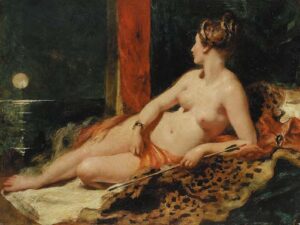
Venus Reclining Holding A Full Moon



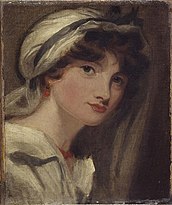
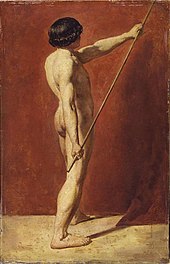



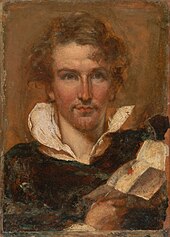



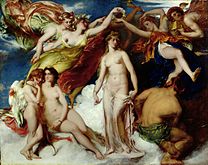














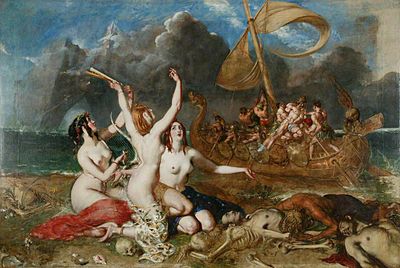





And today is the birthday of Nancy Cunard (Nancy Clara Cunard; 10 March 1896 – 17 March 1965); writer, heiress and political activist. She was born into the British upper class, and devoted much of her life to fighting racism and fascism. She became a muse to some of the 20th century’s most distinguished writers and artists, including Wyndham Lewis, Aldous Huxley, Tristan Tzara, Ezra Pound and Louis Aragon—who were among her lovers—as well as Ernest Hemingway, James Joyce, Constantin Brâncuși, Langston Hughes, Man Ray and William Carlos Williams. MI5 documents reveal that she was involved with Indian socialist leader V. K. Krishna Menon.
Cunard moved to Paris in 1920. There, she became involved with literary Modernism, Surrealists and Dada. Much of her published poetry dates from this period. During her early years in Paris, she was close to Michael Arlen.
In 1920 she had a near-fatal hysterectomy, for reasons that are not entirely clear. She was however sadly unable to carry a pregnancy as a result of the hysterectomy.
A brief relationship with Aldous Huxley influenced several of his novels. She was the model for Myra Viveash in Antic Hay (1923) and for Lucy Tantamount in Point Counter Point (1928).
In Paris, Cunard spent much time with Eugene McCown, an American artist from the hard-drinking set whom she made her protégé. It has been suggested that she became dependent on alcohol at this time, and may have used other drugs.
In 1928, the year she founded her publishing company, Hours Press, she met Henry Crowder, with whom she lived until 1933.
In later years she suffered from mental illness, and her physical health deteriorated. When she died in the Hôpital Cochin, Paris, she weighed only 26 kg (57 pounds / 4 stone, 1lb).
Gallery
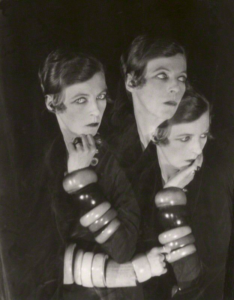
By cecil beaton
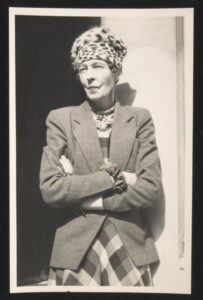
By John banting
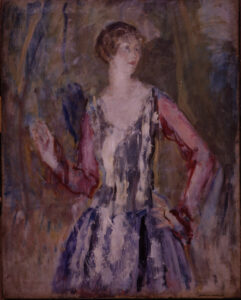
By Ambrose McEvoy
Mac Tag



No Comments on "The Lovers’ Chronicle 10 March – renewal – birth of Lorenzo Da Ponte – art by William Etty – birth of Nancy Cunard"